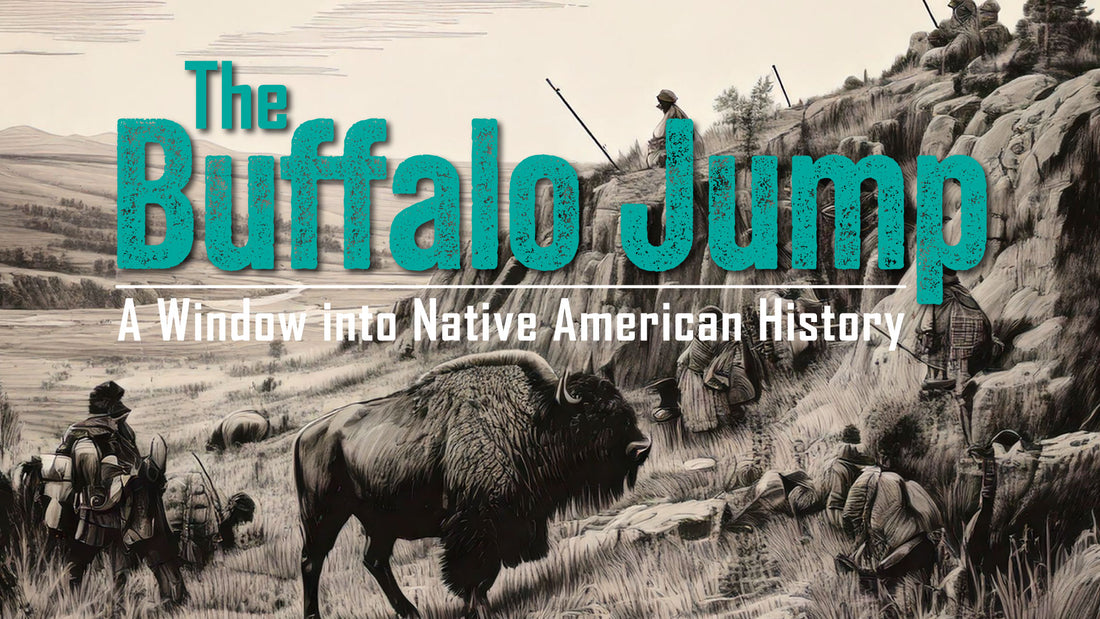
The Ancient Buffalo Jump Site Near Beulah, Wyoming: A Window into Native American History
Nestled near the small town of Beulah in northeastern Wyoming lies a site that echoes with the stories of ancient hunting practices, ingenuity, and survival. Known as a buffalo jump, this location holds profound significance in the history of Native American cultures who once thrived on the Great Plains.
What is a Buffalo Jump?
A buffalo jump is a cliff or steep incline where Native Americans herded bison (commonly referred to as buffalo) to their deaths in a carefully orchestrated hunt. For centuries, these sites served as a vital means of sustenance, providing meat, hides, and bones for food, clothing, shelter, and tools. The buffalo was central to the Plains tribes' way of life, and the buffalo jump was a testament to their strategic and cooperative hunting methods.
The Beulah Buffalo Jump
The buffalo jump near Beulah is one of several across the plains, and its discovery added depth to the understanding of Indigenous practices in this region. Archeological evidence, such as bison remains, stone tools, and other artifacts, suggests that this site was actively used for hundreds, if not thousands, of years.
The tribes of the region, including the Lakota, Cheyenne, and Arapaho, were known to use these sites to conduct communal hunts. The process required a deep understanding of bison behavior, detailed planning, and teamwork. Hunters would identify a herd and use natural terrain and constructed drive lines made of stone cairns to guide the animals toward the jump. Once at the edge, the bison would plunge over the cliff, where waiting hunters quickly processed the animals.
Cultural and Spiritual Significance
Beyond being a practical solution for feeding a community, the buffalo jump also held spiritual significance. The hunt was a sacred act, often accompanied by rituals and prayers to honor the bison's spirit. Tribes believed in maintaining balance and gratitude toward the natural world, ensuring that every part of the animal was utilized with respect.
Preserving History
Today, the buffalo jump near Beulah stands as a silent witness to the resourcefulness and traditions of the Native peoples who lived in harmony with the land. Archeological efforts have shed light on how these sites functioned and have preserved vital clues about the region's history. Visitors can appreciate not only the site itself but also the rich cultural legacy it represents.
Why It Matters
The story of the Beulah buffalo jump is a reminder of the ingenuity and resilience of Native American cultures. It showcases their ability to adapt to their environment and thrive in ways that balanced the demands of survival with reverence for the natural world.
As you explore Wyoming's landscape, consider taking a moment to reflect on the lives of those who came before and how their traditions and practices have shaped the land and its history. The buffalo jump near Beulah is more than a site of historical interest—it's a place to honor a way of life deeply connected to nature and community.
What is a Buffalo Jump?
A buffalo jump is a cliff or steep incline where Native Americans herded bison (commonly referred to as buffalo) to their deaths in a carefully orchestrated hunt. For centuries, these sites served as a vital means of sustenance, providing meat, hides, and bones for food, clothing, shelter, and tools. The buffalo was central to the Plains tribes' way of life, and the buffalo jump was a testament to their strategic and cooperative hunting methods.
The Beulah Buffalo Jump
The buffalo jump near Beulah is one of several across the plains, and its discovery added depth to the understanding of Indigenous practices in this region. Archeological evidence, such as bison remains, stone tools, and other artifacts, suggests that this site was actively used for hundreds, if not thousands, of years.
The tribes of the region, including the Lakota, Cheyenne, and Arapaho, were known to use these sites to conduct communal hunts. The process required a deep understanding of bison behavior, detailed planning, and teamwork. Hunters would identify a herd and use natural terrain and constructed drive lines made of stone cairns to guide the animals toward the jump. Once at the edge, the bison would plunge over the cliff, where waiting hunters quickly processed the animals.
Cultural and Spiritual Significance
Beyond being a practical solution for feeding a community, the buffalo jump also held spiritual significance. The hunt was a sacred act, often accompanied by rituals and prayers to honor the bison's spirit. Tribes believed in maintaining balance and gratitude toward the natural world, ensuring that every part of the animal was utilized with respect.
Preserving History
Today, the buffalo jump near Beulah stands as a silent witness to the resourcefulness and traditions of the Native peoples who lived in harmony with the land. Archeological efforts have shed light on how these sites functioned and have preserved vital clues about the region's history. Visitors can appreciate not only the site itself but also the rich cultural legacy it represents.
Why It Matters
The story of the Beulah buffalo jump is a reminder of the ingenuity and resilience of Native American cultures. It showcases their ability to adapt to their environment and thrive in ways that balanced the demands of survival with reverence for the natural world.
As you explore Wyoming's landscape, consider taking a moment to reflect on the lives of those who came before and how their traditions and practices have shaped the land and its history. The buffalo jump near Beulah is more than a site of historical interest—it's a place to honor a way of life deeply connected to nature and community.
